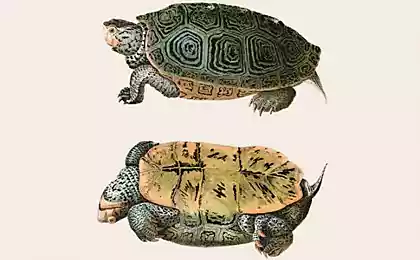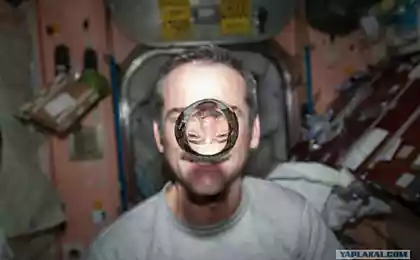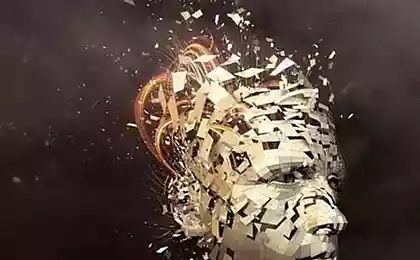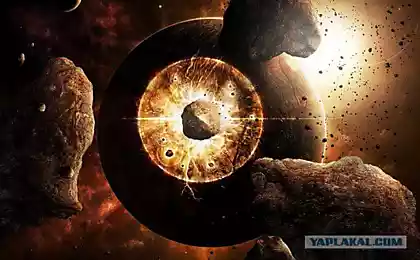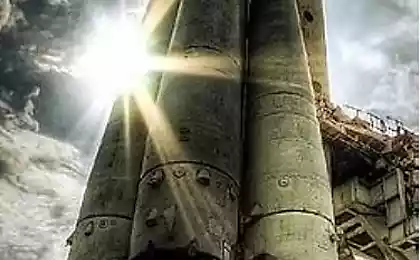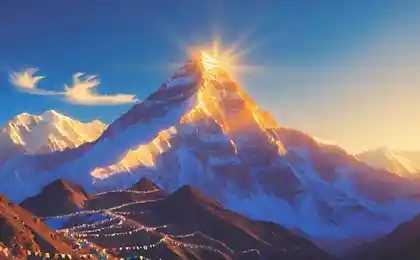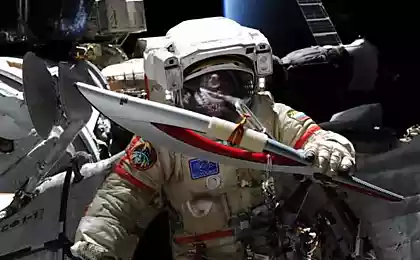383
How do plants grow in zero gravity?
Gravity is integral to all organisms on Earth. It influences every aspect of our physiology, behavior, and development—no matter what you are, you evolve in an environment that is tightly gravitationally rooted in the earth.
But what happens if you give up your environment and find yourself in a situation outside of evolutionary experience? Biologists growing plants in the lab often ask this question. Experiments begin on Earth, but gradually move into space. What could be newer to a plant than microgravity conditions in space?
By studying how plants respond to life in space, we can learn more about how they adapt to environmental changes. Plants are not only essential to earthly life; they can also be essential to our exploration of the universe. As we prepare for future colonization, it is important to understand how our plants can adapt to life on other planets, because they can become a constant source of food, water and air for future colonists.
So even while we're on the ground, aboard the International Space Station, research is well underway. They've already given us some surprises about microgravity growth and changed the way we think about plant growth on Earth.
Learning the serenity of plants
Plants are well suited to studying environmental tensions. Because they stick out in one place — biologists call them sessilent — plants have to be smart about everything the environment presents to them. Moving to a better place will not work, change the environment, too.
However, plants can change the internal environment, and plants are masters of manipulating their metabolism, which helps them cope with the perturbations of the environment. This is why we use plants in our research; we can count on them as sensitive reporters for environmental change, even in relatively new environments like spaceflight.
People have been interested in how plants react to spaceflight since we got the chance to go there.
Space flight requires special growth chambers, special tools for observing and collecting samples and, of course, special people who will take care of the experiment in orbit.
A typical experiment begins on Earth in a laboratory by planting dormant Arabidopsis seeds in petri dishes with a nutrient gel. This gel (unlike soil) is held in place in zero gravity and provides the plant with the necessary water and nutrients. These plants are then wrapped in dark cloth, taken to the Kennedy Space Center and loaded into the Dragon capsule atop a Falcon 9 rocket that flies to the ISS.
After docking, the astronaut loads the cups into plant-growing equipment. Light stimulates the seeds to open up, cameras constantly record the germination process, and at the end of the experiment, the astronaut collects 12-day plants and stores them in conservation tubes.
Upon returning to Earth, we can experiment as much as we like with the preserved samples, study their unique metabolic processes that took place in orbit.
Collecting fruit
One of the first things we found was that some root growth strategies that we thought required gravity didn’t require it at all. In search of water and nutrients, plants grow roots, sending them to places nearby. On Earth, gravity is an important pointer to the direction of growth, but plants also use touch (imagine the root tip as a sensitive finger) to navigate around obstacles.
In 1880, Charles Darwin showed that when you grow plants along an inclined surface, the roots do not grow directly from the seeds, but rather deviate one way. This growth strategy is called “skewing.” Darwin suggested that the reason for this was the combination of gravity and the touch of roots, and for 130 years everyone else thought so.
But the roots grew skewed and without gravity. In 2010, we saw that the roots of plants grown on the ISS traveled all the way across the surface of a petri dish with perfect root skewing - without any gravity. It was a surprise. Obviously, gravity is not behind the root growth pattern.
Plants on the ISS have a second potential source of information from which they could build: light. We hypothesized that in the absence of gravity, which could tell the roots to grow in the direction "away" from the leaves, light plays a large role in the orientation of the roots.
It turned out that yes, light is very important, but not only light – there must be a gradient of light intensity, then it will act as a valuable guide. Think of it as a good smell: you can find the smell in the kitchen with your eyes closed if the cookie oven has just opened, but if the whole house is equally drowned in the flavor of chocolate cookies, you are unlikely to find it.
Luminous plants allow us to know which genes are active, so we can tell which proteins are produced.
We found a number of genes involved in the production and reconstruction of cell walls that are expressed differently in space-grown plants. Other light-sensitive genes—which are commonly expressed in leaves on Earth—were expressed in roots on the ISS. Many phytohormone signaling genes were repressed in the leaves, and the genes responsible for protecting against insects were more active. These patterns of genes and proteins tell us something: in microgravity, plants weaken cell walls and develop new ways to sense their surroundings.
We track changes in gene expression in real time by tagging specific proteins with a fluorescent tag. Plants with glowing fluorescent proteins can tell you how they react to their surroundings. Such engineered plants act as a biological sensor – a “biosensor” in short. Special cameras and microscopes allow us to observe how the plant uses these fluorescent proteins.
This kind of research gives us new insight into how a plant perceives and responds to external stimuli at a fundamental, molecular level. The more we learn about how a plant responds to new and extreme conditions, the more we know about how a plant will respond to changing conditions here on Earth.
Of course, our research in this area contributes to the collective effort to take biology beyond the planet. The fact that gravity is not as important to plants as we once thought is welcome news for the prospects of growing crops on other low-gravity planets and even on ships with no gravity at all. Humans are ready to leave the planet, and when we leave Earth’s orbit, rest assured, plants will be with us. published
P.S. And remember, just by changing your consciousness – together we change the world!
Source: hi-news.ru
But what happens if you give up your environment and find yourself in a situation outside of evolutionary experience? Biologists growing plants in the lab often ask this question. Experiments begin on Earth, but gradually move into space. What could be newer to a plant than microgravity conditions in space?
By studying how plants respond to life in space, we can learn more about how they adapt to environmental changes. Plants are not only essential to earthly life; they can also be essential to our exploration of the universe. As we prepare for future colonization, it is important to understand how our plants can adapt to life on other planets, because they can become a constant source of food, water and air for future colonists.
So even while we're on the ground, aboard the International Space Station, research is well underway. They've already given us some surprises about microgravity growth and changed the way we think about plant growth on Earth.
Learning the serenity of plants
Plants are well suited to studying environmental tensions. Because they stick out in one place — biologists call them sessilent — plants have to be smart about everything the environment presents to them. Moving to a better place will not work, change the environment, too.
However, plants can change the internal environment, and plants are masters of manipulating their metabolism, which helps them cope with the perturbations of the environment. This is why we use plants in our research; we can count on them as sensitive reporters for environmental change, even in relatively new environments like spaceflight.
People have been interested in how plants react to spaceflight since we got the chance to go there.
Space flight requires special growth chambers, special tools for observing and collecting samples and, of course, special people who will take care of the experiment in orbit.
A typical experiment begins on Earth in a laboratory by planting dormant Arabidopsis seeds in petri dishes with a nutrient gel. This gel (unlike soil) is held in place in zero gravity and provides the plant with the necessary water and nutrients. These plants are then wrapped in dark cloth, taken to the Kennedy Space Center and loaded into the Dragon capsule atop a Falcon 9 rocket that flies to the ISS.
After docking, the astronaut loads the cups into plant-growing equipment. Light stimulates the seeds to open up, cameras constantly record the germination process, and at the end of the experiment, the astronaut collects 12-day plants and stores them in conservation tubes.
Upon returning to Earth, we can experiment as much as we like with the preserved samples, study their unique metabolic processes that took place in orbit.
Collecting fruit
One of the first things we found was that some root growth strategies that we thought required gravity didn’t require it at all. In search of water and nutrients, plants grow roots, sending them to places nearby. On Earth, gravity is an important pointer to the direction of growth, but plants also use touch (imagine the root tip as a sensitive finger) to navigate around obstacles.
In 1880, Charles Darwin showed that when you grow plants along an inclined surface, the roots do not grow directly from the seeds, but rather deviate one way. This growth strategy is called “skewing.” Darwin suggested that the reason for this was the combination of gravity and the touch of roots, and for 130 years everyone else thought so.
But the roots grew skewed and without gravity. In 2010, we saw that the roots of plants grown on the ISS traveled all the way across the surface of a petri dish with perfect root skewing - without any gravity. It was a surprise. Obviously, gravity is not behind the root growth pattern.
Plants on the ISS have a second potential source of information from which they could build: light. We hypothesized that in the absence of gravity, which could tell the roots to grow in the direction "away" from the leaves, light plays a large role in the orientation of the roots.
It turned out that yes, light is very important, but not only light – there must be a gradient of light intensity, then it will act as a valuable guide. Think of it as a good smell: you can find the smell in the kitchen with your eyes closed if the cookie oven has just opened, but if the whole house is equally drowned in the flavor of chocolate cookies, you are unlikely to find it.
Luminous plants allow us to know which genes are active, so we can tell which proteins are produced.
We found a number of genes involved in the production and reconstruction of cell walls that are expressed differently in space-grown plants. Other light-sensitive genes—which are commonly expressed in leaves on Earth—were expressed in roots on the ISS. Many phytohormone signaling genes were repressed in the leaves, and the genes responsible for protecting against insects were more active. These patterns of genes and proteins tell us something: in microgravity, plants weaken cell walls and develop new ways to sense their surroundings.
We track changes in gene expression in real time by tagging specific proteins with a fluorescent tag. Plants with glowing fluorescent proteins can tell you how they react to their surroundings. Such engineered plants act as a biological sensor – a “biosensor” in short. Special cameras and microscopes allow us to observe how the plant uses these fluorescent proteins.
This kind of research gives us new insight into how a plant perceives and responds to external stimuli at a fundamental, molecular level. The more we learn about how a plant responds to new and extreme conditions, the more we know about how a plant will respond to changing conditions here on Earth.
Of course, our research in this area contributes to the collective effort to take biology beyond the planet. The fact that gravity is not as important to plants as we once thought is welcome news for the prospects of growing crops on other low-gravity planets and even on ships with no gravity at all. Humans are ready to leave the planet, and when we leave Earth’s orbit, rest assured, plants will be with us. published
P.S. And remember, just by changing your consciousness – together we change the world!
Source: hi-news.ru

